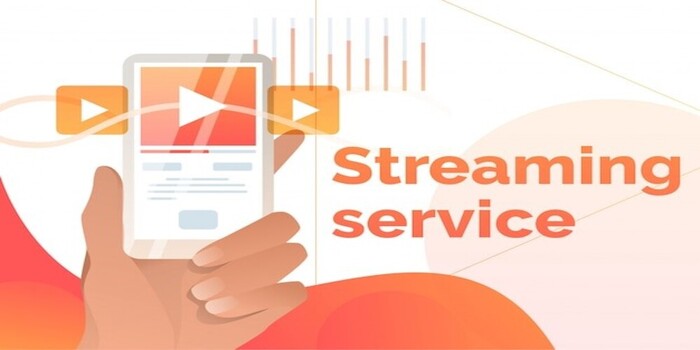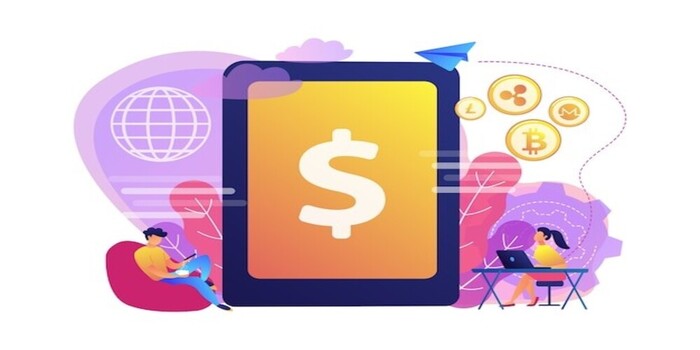
In recent years, the way we consume our entertainment has drastically changed, thanks to the emergence of over-the-top (OTT) streaming services. With multiple players in the industry offering different plans, packages and pricing options, people now have a variety of ways to access movies and shows on any device they want. With this rapid expansion of OTT streaming services disrupting traditional media models, consumers and industry professionals need to stay up-to-date on how these services impact offline entertainment tools such as cable TV or movie theaters. In this post, we’ll explore what OTT streaming services are, look at some examples from top providers, and examine why this technology is changing how we watch content.
What are Over-The-Top (OTT) streaming services and why are they on the rise now more than ever before

Over-The-Top (OTT) streaming services refer to online platforms that deliver video content directly to consumers over the internet, bypassing traditional distribution channels such as cable or broadcast television. Examples of OTT streaming services include Netflix, Hulu, Amazon Prime Video, Disney+, and HBO Max.
There are several reasons why OTT streaming services are on the rise now more than ever before:
- Increased Internet Connectivity: With the widespread availability of high-speed internet, more people have access to streaming services, making it easier to watch their favorite movies and TV shows online.
- Affordable Pricing: OTT streaming services offer a wide range of content at relatively low prices, making them an attractive alternative to traditional cable and satellite TV subscriptions.
- Original Content: Many OTT services have begun producing their own original content, which has helped to differentiate them from competitors and attract new subscribers.
- Convenience: Streaming services offer on-demand access to content, which means viewers can watch what they want, when they want, without being tied to a specific broadcasting schedule.
- COVID-19 Pandemic: With the COVID-19 pandemic forcing people to stay at home, the demand for entertainment has increased significantly. This has led to a surge in the use of OTT streaming services as people look for ways to stay entertained while staying indoors.
Overall, the rise of OTT streaming services has disrupted the traditional media industry and given consumers more choice and control over how they watch TV and movies. As internet connectivity continues to improve and streaming services continue to produce compelling content, the trend towards OTT is likely to continue in the coming years.
The advantages of OTT streaming services for viewers and content creators alike

OTT streaming services offer several advantages for both viewers and content creators:
Advantages for Viewers:
- Flexibility and Convenience: Viewers can watch content anytime, anywhere, and on any device as long as they have internet access, making it more convenient and flexible than traditional TV viewing.
- Variety of Content: OTT streaming services offer a wide range of content, including original series and movies, which cater to diverse interests and preferences.
- Personalization: Many streaming services offer personalized recommendations based on a viewer’s viewing history, preferences, and ratings.
- Cost-Effective: OTT streaming services are generally more affordable than traditional cable or satellite TV subscriptions, which makes them a cost-effective alternative.
Advantages for Content Creators:
- Direct Access to Viewers: Content creators can now directly reach their audience through OTT streaming services without the need for traditional TV network distribution.
- Cost-Effective Production: Streaming services can produce content at a lower cost than traditional TV networks, which provides more opportunities for independent and emerging filmmakers to produce their content.
- Data Analytics: Streaming services provide data analytics tools that content creators can use to better understand their audience and create content that resonates with them.
- Global Reach: OTT streaming services can reach audiences globally, providing content creators opportunities to reach new markets.
Overall, OTT streaming services offer viewers and content creators several benefits. They provide a more flexible and personalized viewing experience for viewers, while giving content creators direct access to their audience, cost-effective production opportunities, and global reach.
Different types of OTT streaming services available and which one might be best for you

There are different types of OTT streaming services available, each offering unique features and content. Here are some of the most common types of OTT streaming services:
- Subscription Video-On-Demand (SVOD): These services offer a library of content for a monthly subscription fee. Examples include Netflix, Hulu, and Amazon Prime Video.
- Ad-Supported Video-On-Demand (AVOD): These services offer free content with advertisements. Examples include Pluto TV and Tubi.
- Transactional Video-On-Demand (TVOD): These services offer content for a one-time fee, such as renting or buying a movie. Examples include Google Play and Apple TV.
- Live Streaming: These services offer live content, such as sports events or news broadcasts. Examples include Sling TV and YouTube TV.
- Hybrid Services: These services offer a combination of different models. Examples include HBO Max and Disney+.
Choosing the best OTT streaming service for you depends on your personal preferences and viewing habits. Here are some factors to consider:
- Content Library: Consider the type of content you enjoy watching, and choose a service that offers a large library of content in that category.
- Price: Compare the subscription or rental fees of different services to find one that fits your budget.
- Device Compatibility: Check if the service is compatible with the devices you own, such as smart TVs, streaming devices, or mobile phones.
- Streaming Quality: Consider the streaming quality and ensure that the service provides the video quality you prefer.
- Free Trials: Many services offer free trials for a limited period, which allows you to test out the service before committing to a subscription.
Overall, choosing the best OTT streaming service for you depends on your personal preferences and viewing habits. Consider the factors mentioned above to make an informed decision.
Analyzing the costs associated with subscribing to an OTT streaming services

OTT streaming services offer a convenient and affordable alternative to traditional cable and satellite TV subscriptions. However, it’s important to analyze the costs associated with subscribing to these services to determine if they fit within your budget. Here are some costs to consider when subscribing to an OTT streaming service:
- Subscription Fee: Most OTT streaming services charge a monthly subscription fee. The cost of the subscription varies depending on the service and the plan you choose. For example, Netflix offers three different plans ranging from $8.99 to $17.99 per month.
- Add-On Services: Some streaming services offer add-on services, such as additional channels or premium content, which may come at an additional cost. For example, Hulu offers HBO and Cinemax as add-ons for an additional fee.
- Equipment Costs: To stream content, you need a device such as a smart TV, streaming stick, or gaming console. While many people already own these devices, if you need to purchase new equipment, it can add to the cost.
- Internet Costs: To stream content, you need a reliable internet connection. If you don’t have an internet connection or your current connection is slow, you may need to upgrade your plan, which can add to your monthly costs.
- Taxes: Some streaming services charge taxes, which can increase the overall cost of the subscription.
When analyzing the costs associated with subscribing to an OTT streaming service, it’s important to consider the value you’re getting for your money. With OTT streaming services, you have access to a large library of content, which may be more affordable than traditional cable or satellite TV subscriptions. Additionally, some services offer free trials, which allow you to test the service before committing to a subscription.
Examining how various existing subscription models could potentially change in the future

OTT streaming services have been constantly evolving since their inception, and their subscription models have also been changing over time. Here are some potential changes that could occur in the future for OTT subscription models:
- Bundle Packages: In the future, we could see OTT streaming services offering bundle packages that include multiple services for a lower cost. For example, Disney+ currently offers a bundle that includes Disney+, Hulu, and ESPN+ at a reduced cost.
- Tiered Subscription Plans: We may see OTT streaming services offering tiered subscription plans, offering different features at different price points. For example, a lower-priced plan could include limited content, while a higher-priced plan could offer premium content and additional features.
- Advertising-Supported Free Services: Currently, most OTT streaming services charge a subscription fee or offer content on a pay-per-view basis. However, we could see some services offering free, ad-supported content in the future, similar to traditional TV.
- Pay-Per-View: While pay-per-view is currently a common model for renting or purchasing movies or live events, we could see more services offering this model for original content or exclusive events.
- Usage-Based Pricing: In the future, we could see OTT streaming services offering usage-based pricing models. For example, instead of paying a monthly subscription fee, users could pay for the amount of content they consume.
Overall, the OTT streaming industry is constantly evolving, and we may see a variety of new subscription models emerge in the future. These models could provide users with greater flexibility, affordability, and more options to access their favorite content.
Understanding the importance of data security when using an OTT streaming services

Data security is important for any online service, including OTT streaming services. Here are some reasons why data security is important when using OTT streaming services:
- Personal Information: When you sign up for an OTT streaming service, you may be required to provide personal information, such as your name, address, and credit card details. This information needs to be protected to prevent it from falling into the wrong hands and being used for fraudulent activities.
- Payment Information: Most OTT streaming services require a credit card for payment. This information needs to be encrypted to prevent it from being intercepted and used for fraudulent activities.
- Viewing History: Your viewing history contains valuable information about your interests and habits, which could be used for targeted advertising. This information needs to be protected to prevent it from being shared or sold without your consent.
- Password Protection: Password protection is essential to prevent unauthorized access to your account. A strong and unique password should be used, and two-factor authentication should be enabled if available.
- Hacking and Malware: OTT streaming services could be vulnerable to hacking and malware attacks, which could compromise your personal information. It’s important to ensure that your devices and streaming service accounts are kept up-to-date with the latest security patches and software updates.
Overall, data security is a critical aspect of using OTT streaming services. It’s important to choose reputable services that prioritize data security, and to take steps to protect your personal information and devices. By following best practices for data security, you can ensure that your OTT streaming experience is safe and enjoyable.
In Conclusion
All in all, Over-The-Top (OTT) streaming services are rapidly becoming the dominant form of media consumption. Their flexibility for users, cost benefits for producers and content distributors, and clear advantages over traditional broadcasting make them an ideal choice for viewers who want more control over their watching habits. Whether you subscribe to Netflix, Hulu, Amazon Prime Video or another similar service, the landscape of OTT is constantly changing and growing. It is important to be mindful of costs associated with streaming services, as well as data security measures that should be taken while using them. As these companies compete to gain market share in the coming years, we can expect even more attractive subscription models become available.


